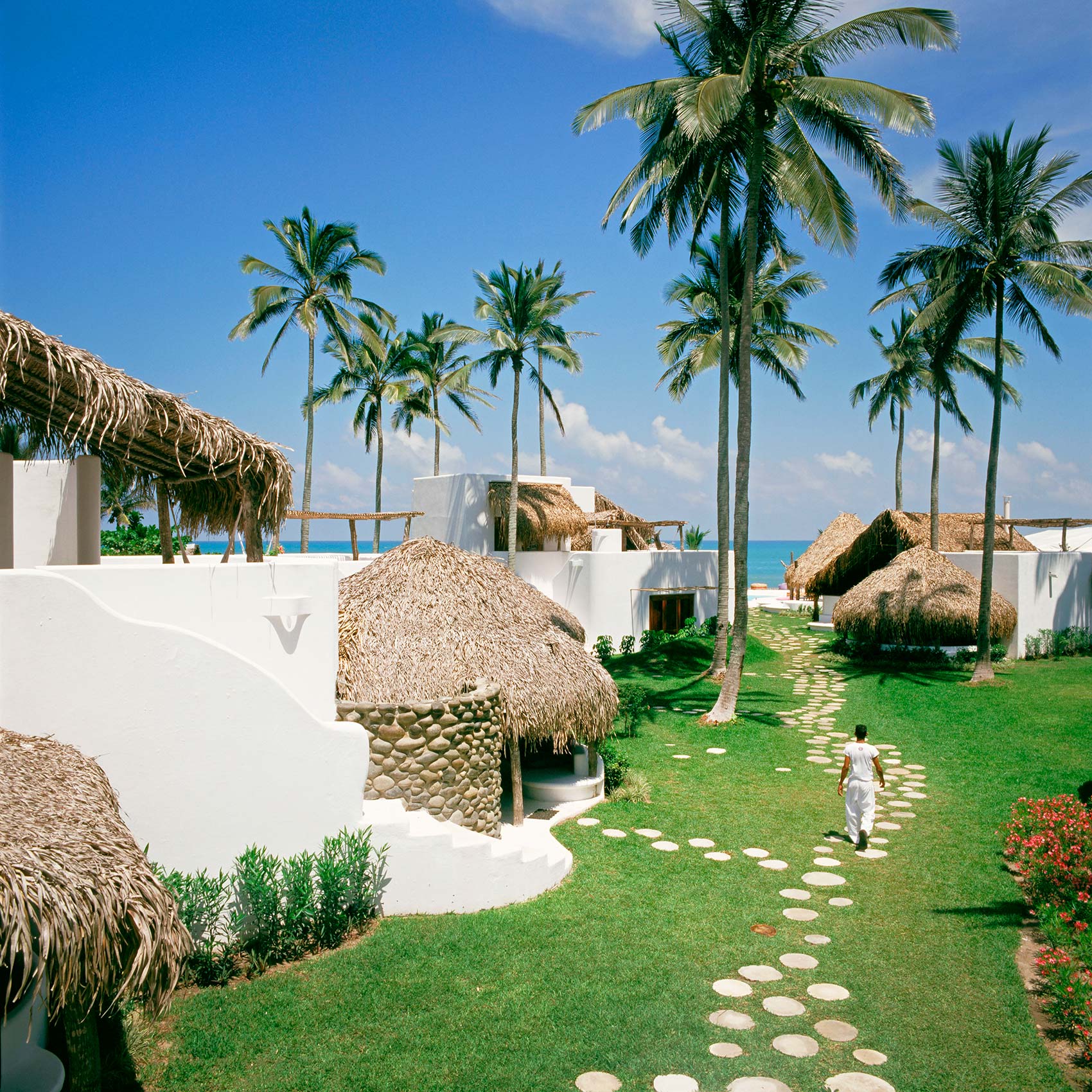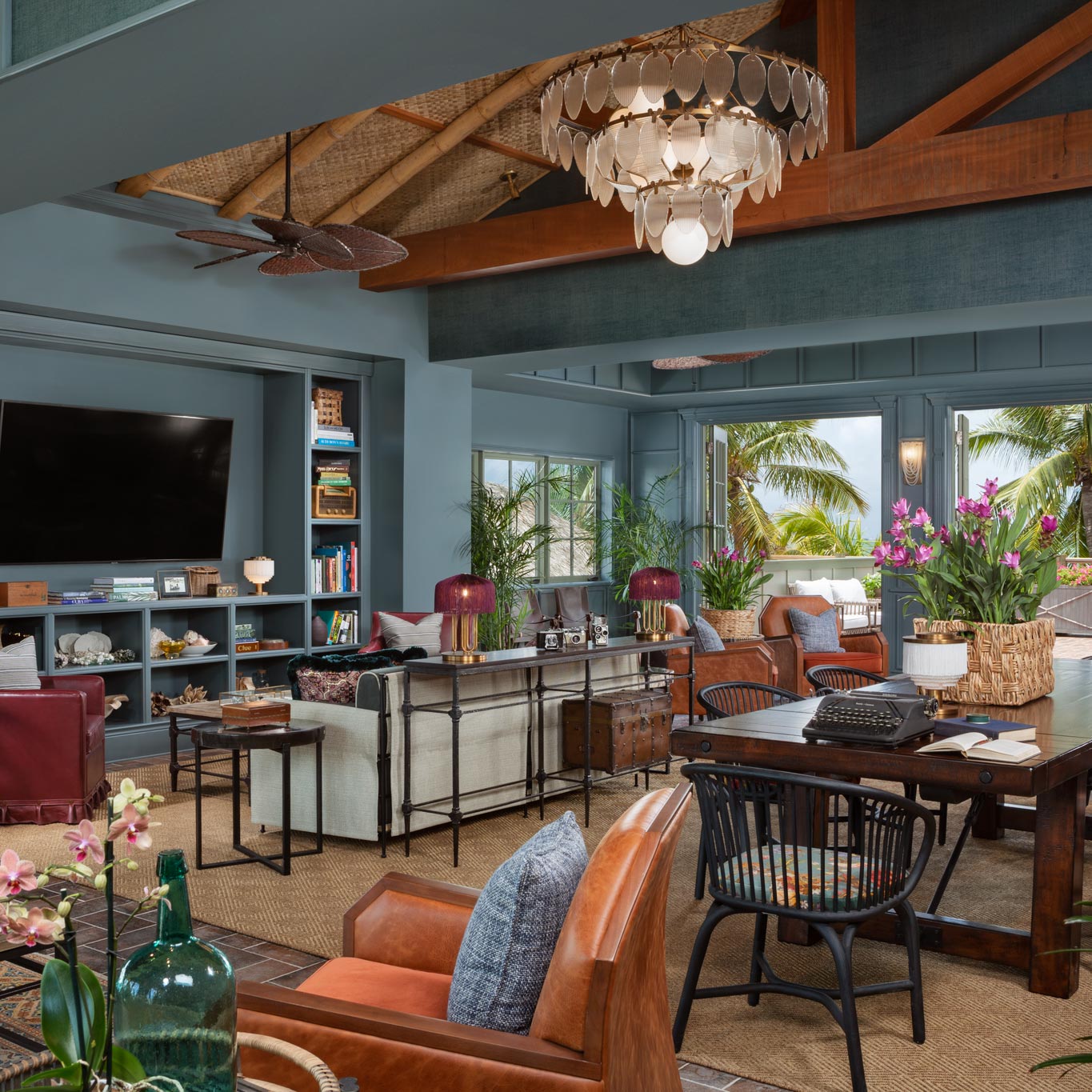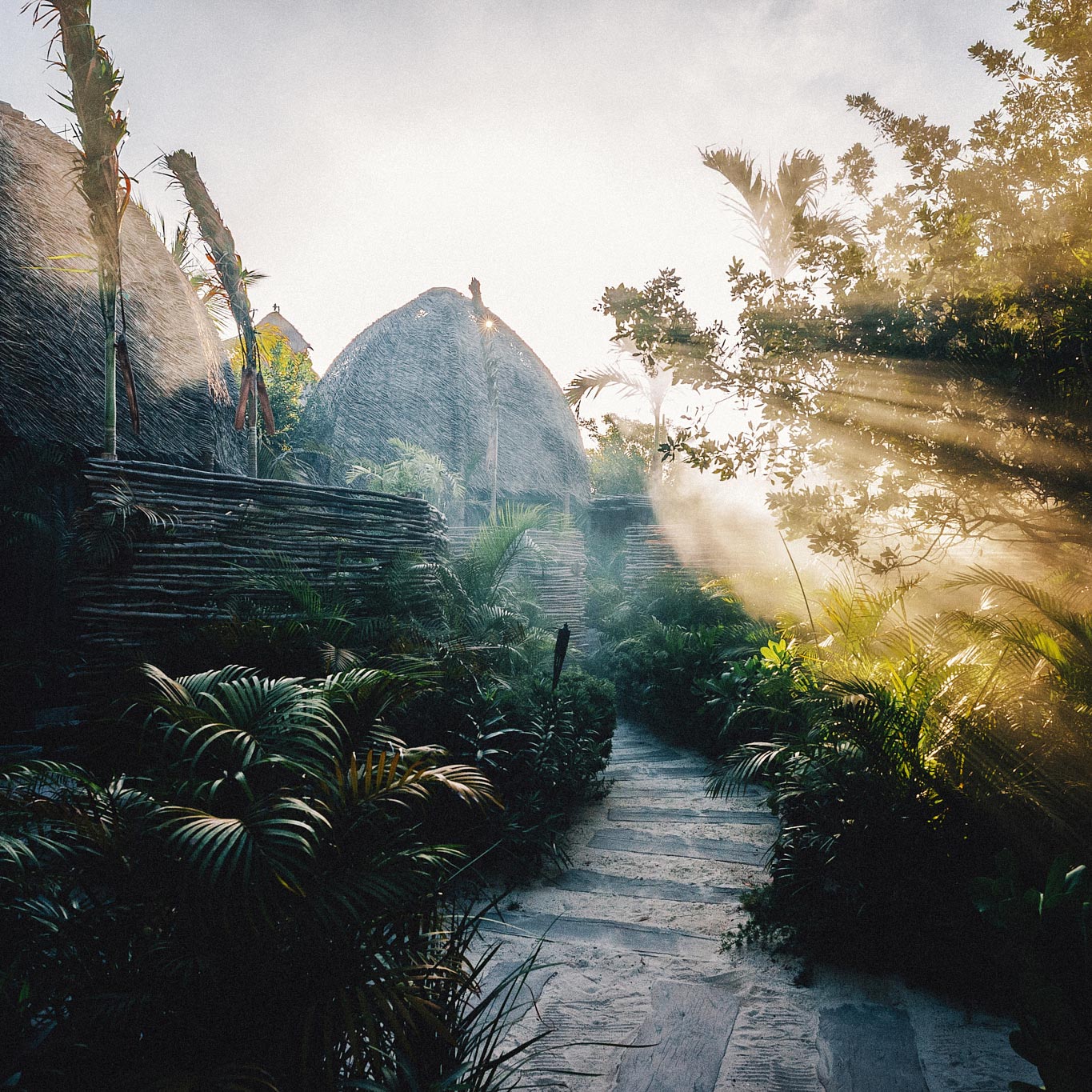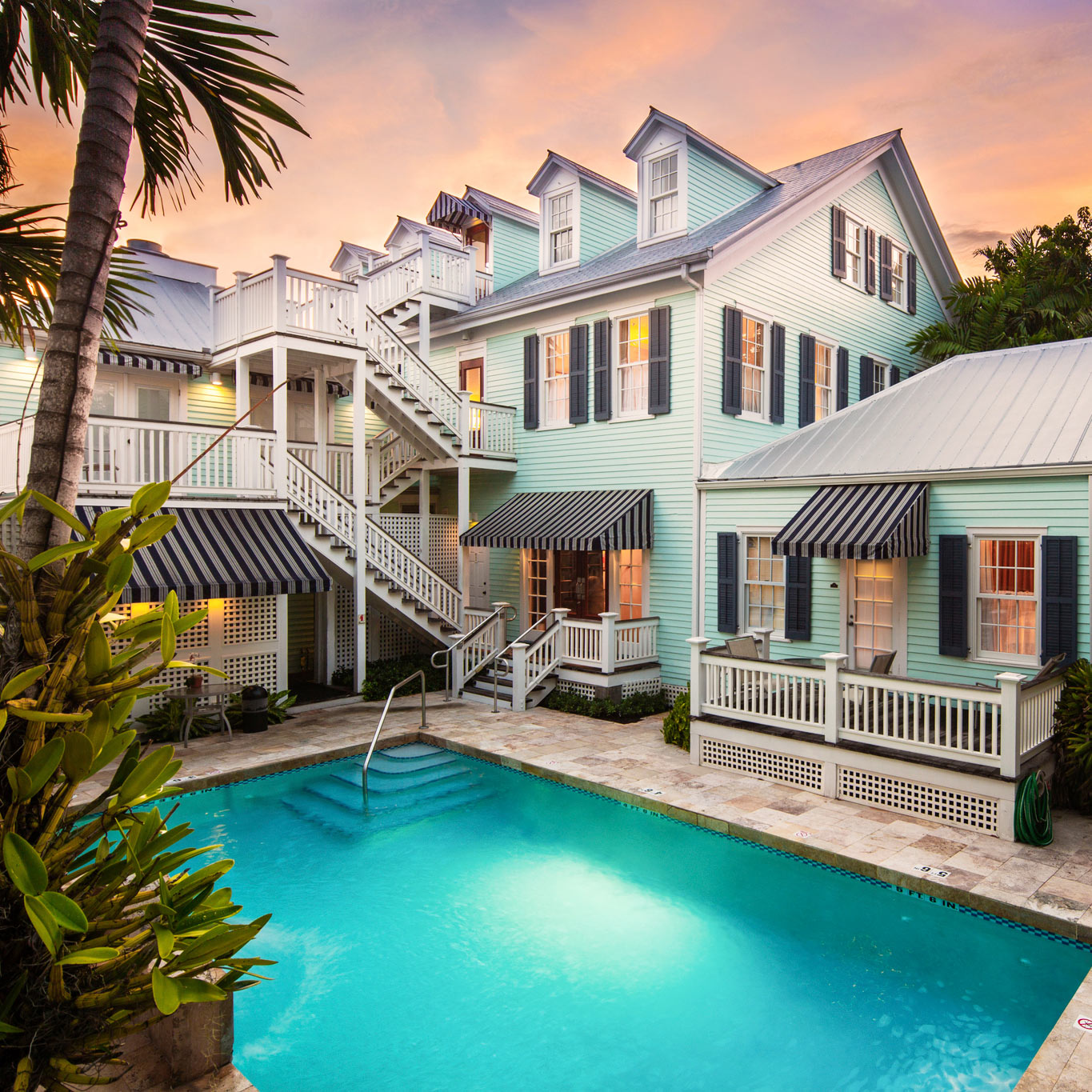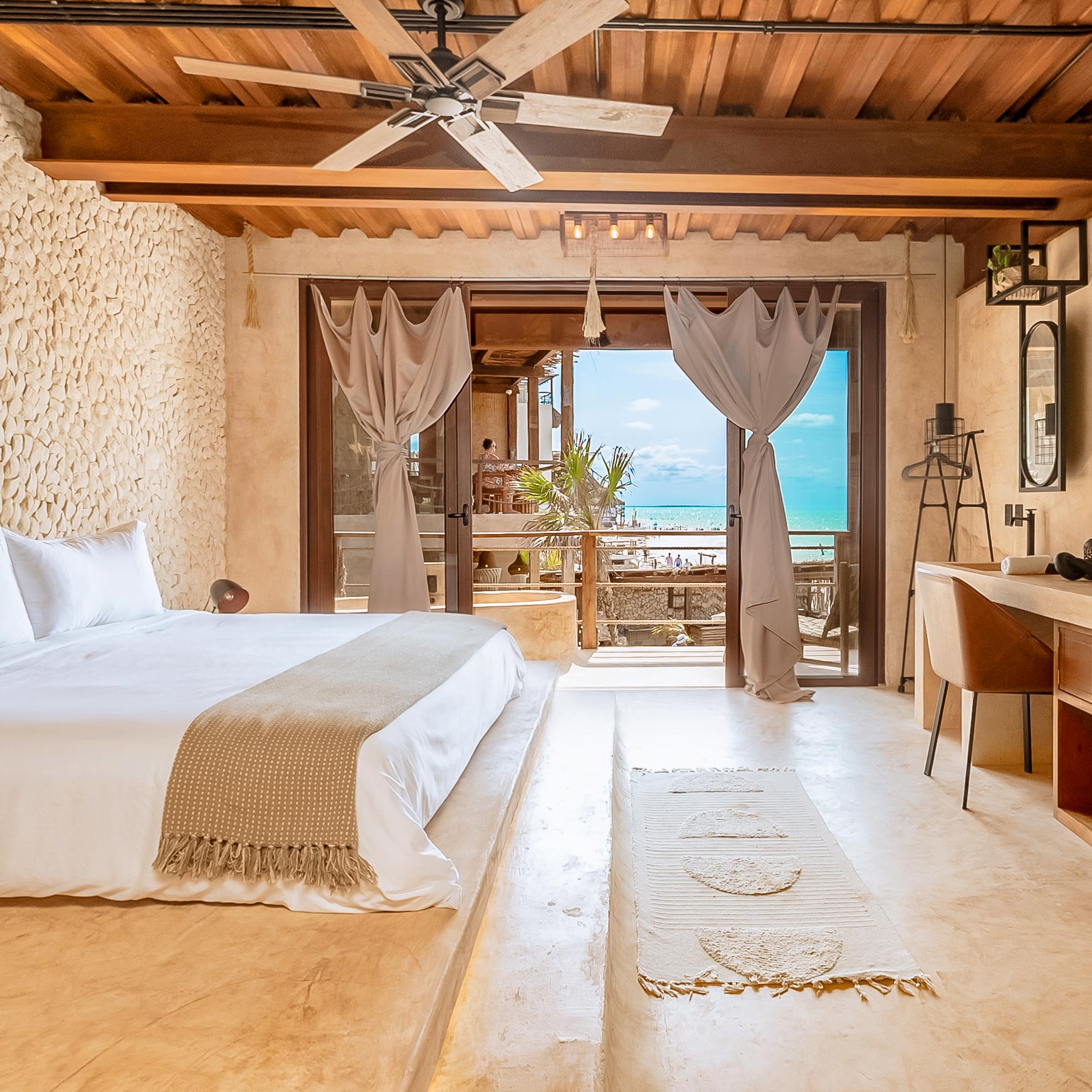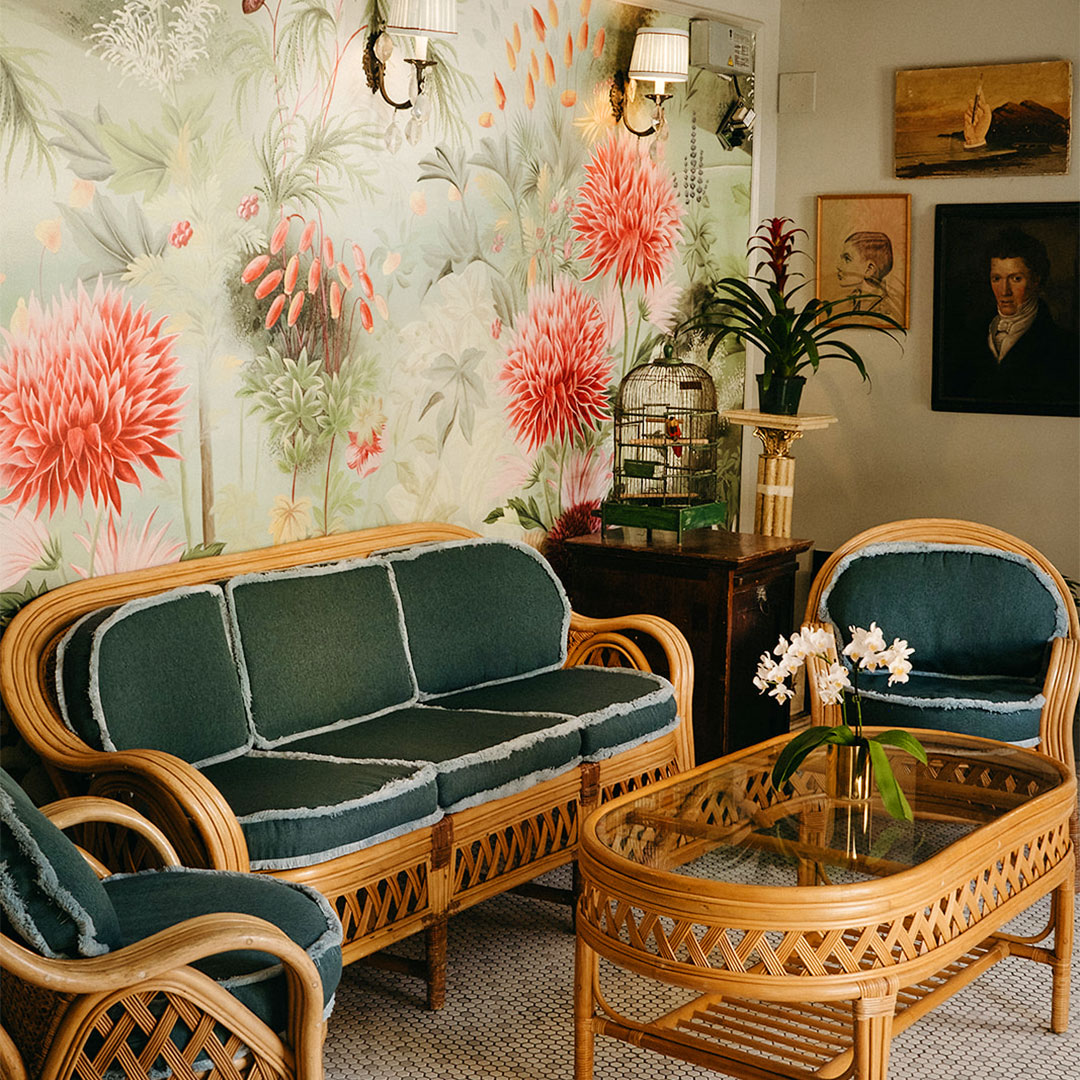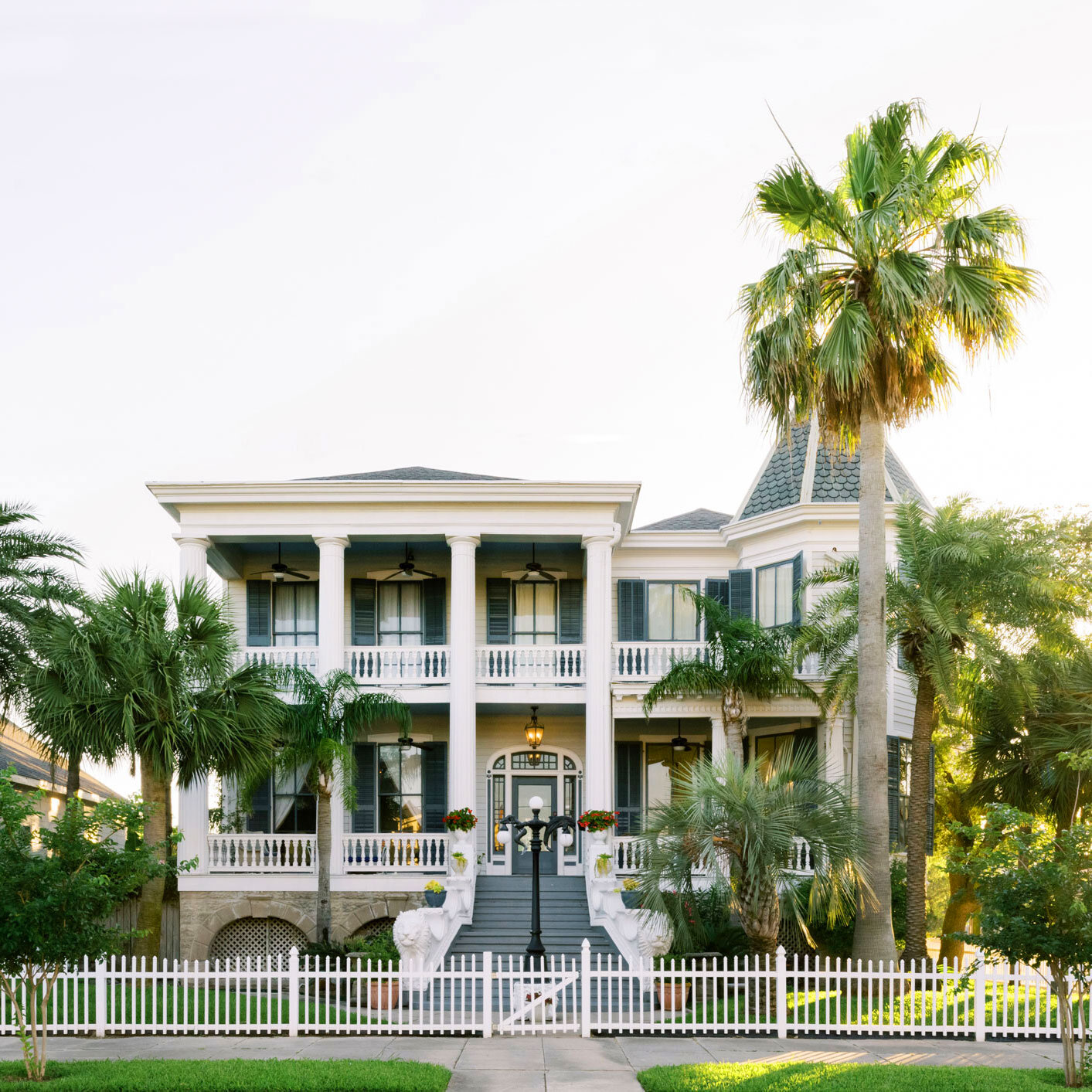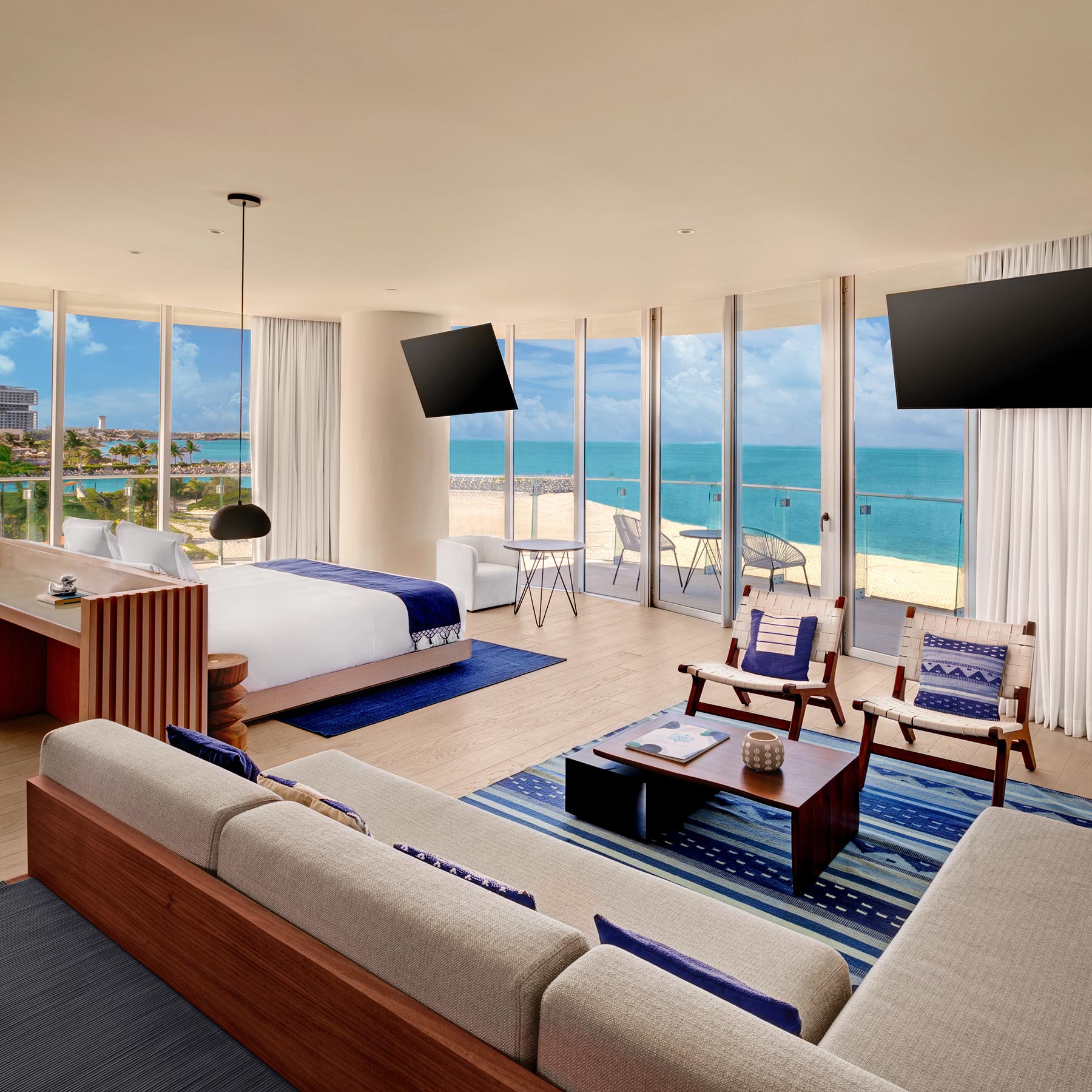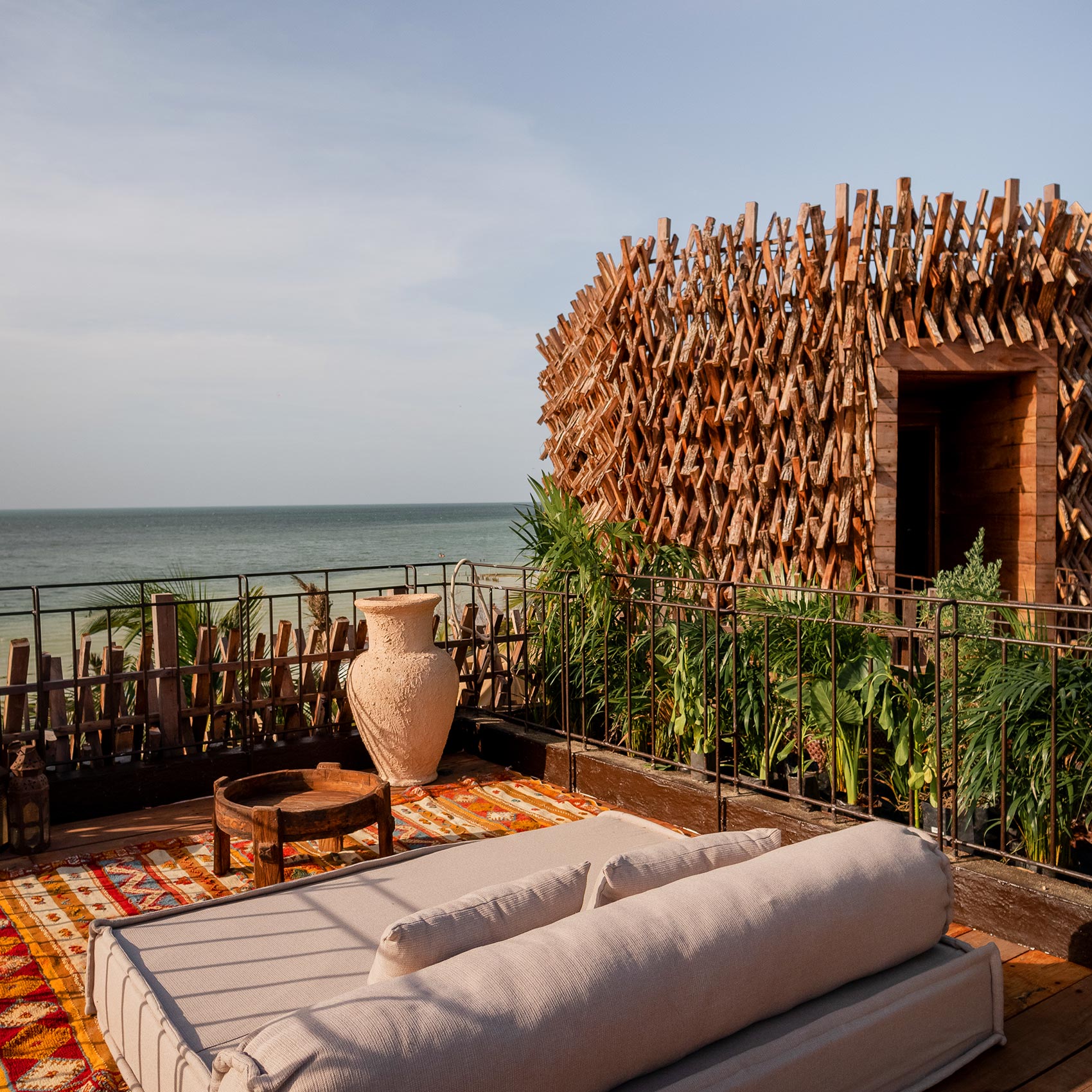
There’s been a bit of controversy in the U.S. over what to call the large body of water between Mexico and the southeastern states. There’s no controversy over these twelve terrific hotels, all within golf cart distance of the Gulf of Mexico.
By Mark Fedeli
Marketing and Editorial Director, Tablet Hotels
If you can remember all the way back to January of 2025, you might recall when Donald Trump signed an executive order directing all U.S. federal agencies to call the Gulf of Mexico the Gulf of America. The rest of us, though, are not bound by such strictures, and the reasons to continue using the gulf’s universally accepted, nearly 500-year-old descriptor are plentiful, ranging from convenience, to resistance, to simply following AP standards (which still call for Gulf of Mexico), or simply not following edicts from a government that isn’t your own (very few countries, if any, recognize the change).
Calling it the Gulf of America wouldn’t be completely devoid of logic; it is, after all, the largest gulf in the two American continents. Neither is the America the new name looks to glorify, though. The change itself is as ill-timed as it is ahistorical. The gulf received its name centuries before the United States was even a country. European explorers named it after Mexica, the Nahuatl name for the Aztec Empire. Meanwhile, today’s Latinos in the U.S. are under regular threat from ICE, sparking outrage across the nation.
So where do we stand? As always, on the side of hospitality. In November of 2016, our co-founder sent an email out to all of our users, describing his pride at being an immigrant in New York City, and reminding us that “Hospitality — the friendly and generous reception and entertainment of guests, visitors, or strangers — is one of humanity’s most beautiful gestures.” He explained how he created Tablet to help people shed their prejudices and enhance their empathy, the byproducts of traveling and leaving your comfort zone. To do otherwise would be a sin.
Oh right, hotels. Here they are. Six in the States and six in Mexico. Sharing is caring, baby. Some are right on the gulf, some are in sight of it, and some others might require a quick cab ride (or souped-up golf cart) to reach it. All of them are titans of the Tablet selection.
Hotel Azucar
Veracruz, Mexico
The little beach town of Veracruz is the perfect place for a design-savvy eco-retreat like Hotel Azucar — instead of post-industrial concrete and oil tanks, here we’re back to thatched-roof bungalows, albeit ones with crisp all-white contemporary bedrooms inside. The construction is sustainable and environmentally friendly, a reaction against the despoilment that followed in the wake of Mexico’s first mega-resorts.
Little Palm Island
Little Torch Key, FL, USA
This four-acre private-island resort is home to a mere 30 suites and a couple of rules: no guests under 18, no audible cell phones. Thus, the atmosphere properly tranquil. Suites are divided among a number of thatched-roof bungalows, some more secluded than others, but all more than private enough. The look is classic, in the British West Indies mode, and the comforts are delightfully low-tech.
Nomade Holbox
Holbox, Mexico
The focus at Nomade Holbox is on wellness: Mayan-inspired sound healing, breathwork, and yoga are offered inside a structure that’s unironically called the Gratitude Tent. And even outside the tent there’s plenty to be grateful for, starting with the hotel’s series of modern treehouses, each with a queen-sized bed facing the water, an indoor-outdoor shower, and a rooftop terrace offering 360-degree views over the island scenery.
The Marquesa Hotel
Key West, FL, USA
Key West has its charmless and overdeveloped side; but Old Town, home to the incomparable Marquesa Hotel, belongs to the locals, and to history — this is the Key West of Hemingway, of Tennessee Williams, an oasis of old-world refinement. The hotel itself is an assembly of four separate buildings, varying from the rustic charm of the original 1884 conch house to the sleeker modern additions.
Awa Holbox
Holbox, Mexico
Once a quiet tropical island off the coast of the Yucatán Peninsula, Isla Holbox is now a stylish hotspot with hundreds of hotels to choose from. Only a handful are right on the beach, though — among them is Awa Holbox, a modern boutique hotel that’s a 10-minute golf cart ride from the ferry terminal. The design is contemporary, but the hotel channels the island’s laid-back spirit.
The Celestine
New Orleans, LA, USA
The Celestine is a reminder of what makes the French Quarter one of the most unique neighborhoods in America. Ten rooms and suites decorated in a retro European-inspired style look out over either busy Toulouse Street or the tranquil inner courtyard; while they’re plenty comfortable, they’re more notable for their eclectic and richly detailed style.
Carr Mansion
Galveston, TX, USA
There’s no place, in Texas or anywhere else, quite like Galveston — and the same can be said of the Carr Mansion, an 1866 Greek Revival mansion that’s lived several lives before its most recent transformation into an adults-only boutique bed and breakfast mere blocks from the great gulf. The house is fantastically well-preserved and beautifully updated, with every room an experience unto itself.
Hacienda Uayamon
Uayamon, Mexico
In the early 19th century, this was a working plantation, practically a tiny city, a self-contained environment housing the owners and workers alike. Today, improbably enough, it’s a small-scale luxury hotel — each of the cottages that once made up the servant’s quarters has been converted into a single luxury villa, and what was once the hospital is now a pair of sprawling suites, each with a private plunge pool.
The Ritz-Carlton, Naples
Naples, FL, USA
This is one of those moments when you’re glad for the consistency of an established chain. The Naples outpost is simply Ritz-Carlton through and through, pure old-world décor and refreshingly formal service — including afternoon tea. You’re far enough north of town to feel comfortably secluded, and the beach, right on the gulf, is as tranquil and pleasant as they come.
The Admiral Hotel
Mobile, AL, USA
Like New Orleans, Alabama’s coastal metropolis of Mobile has more than a little bit of French heritage — and it’s this connection that serves as the Admiral Hotel’s historical inspiration. Not that it’s a historical hotel — the current incarnation of the 1940s-vintage Admiral is a modern luxury experience, mixing classic elegance with bold colors and an eye-catching graphic sensibility.
SLS Cancun
Cancún, Mexico
Cancún technically faces the Caribbean, but if you go up to the roof at SLS Cancún and look left, past the impeccable white-sand beach, far out over the turquoise waters, you can maybe catch a glimpse of the gulf in the distance. Either way, this hotel aims to bowl you over with contemporary design and state-of-the-art luxury, and provide a memorable, self-contained experience. We consider it a success.
Maison Couturier
San Rafael, Mexico
The coastal French enclave of San Rafael is home to a nineteenth-century estate, fringed with lush vegetation, surrounded by banana plantations, operating today as a small boutique hotel called Maison Couturier. The style is broadly historical, but assembled with a designer’s eye. This is a Grupo Habita production, which means it’s philosophy comes from Mexico’s hippest boutique chain.

Mark Fedeli is the hotel marketing and editorial director for Tablet and Michelin Guide. He’s been with Tablet since 2006, and he thinks you should subscribe to our newsletter.



